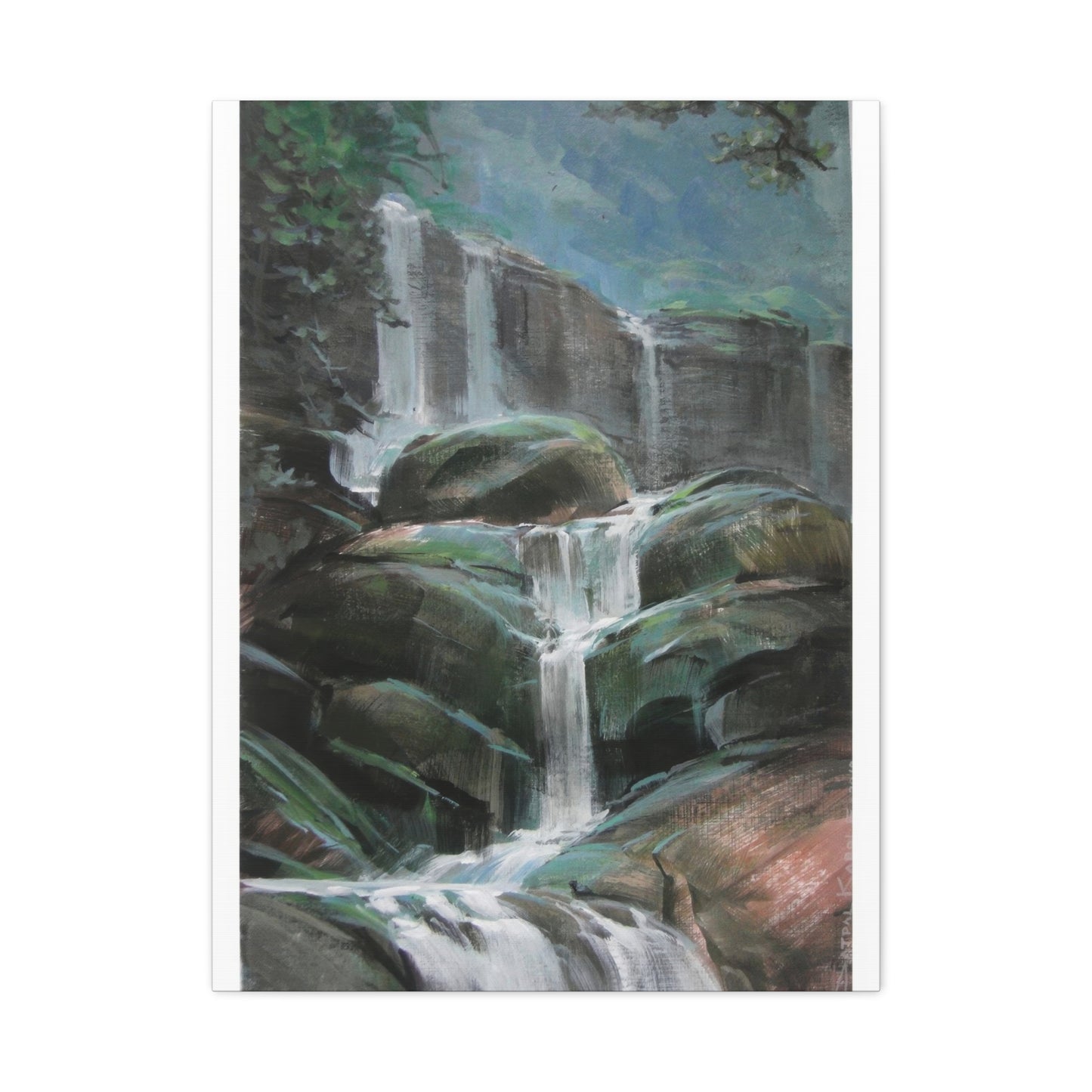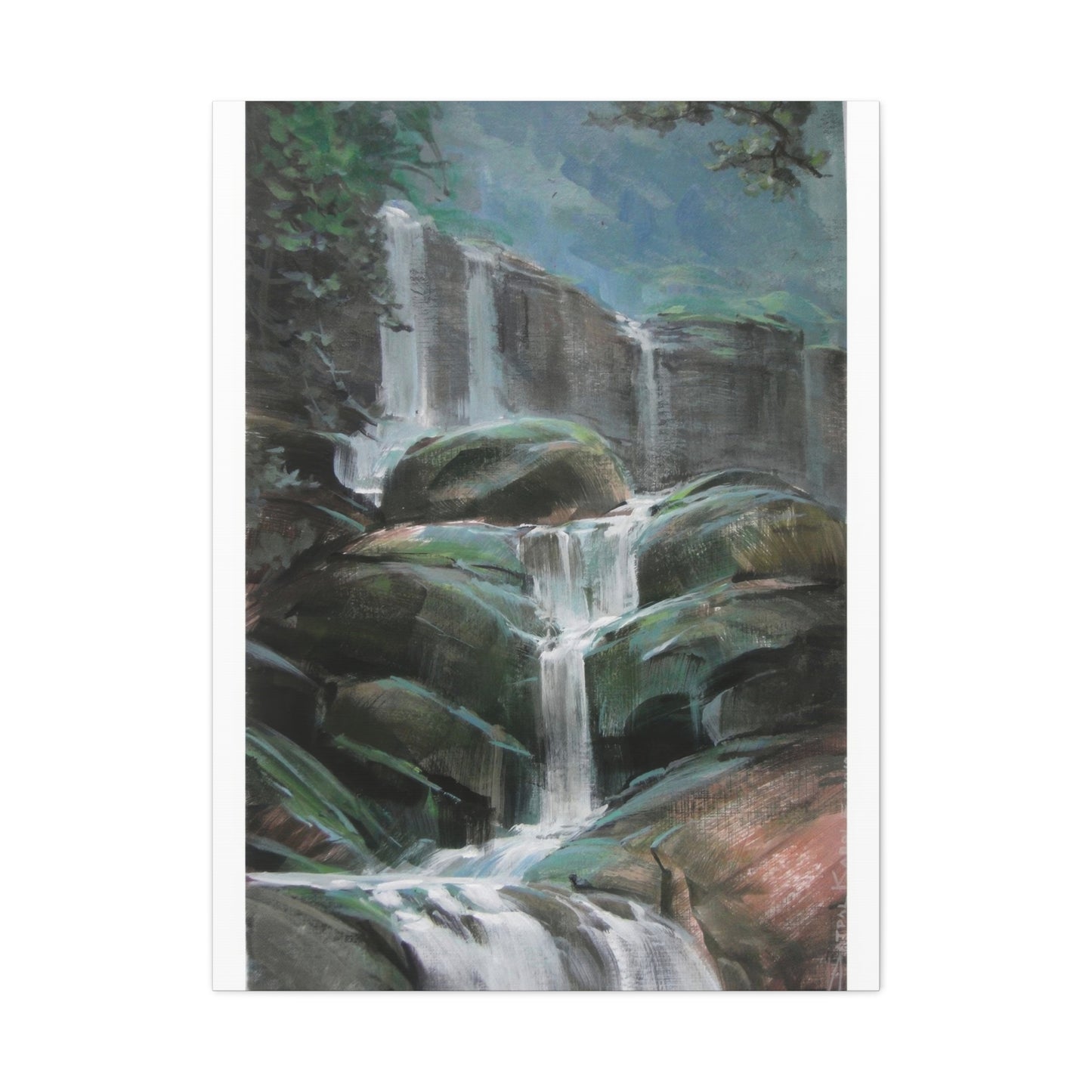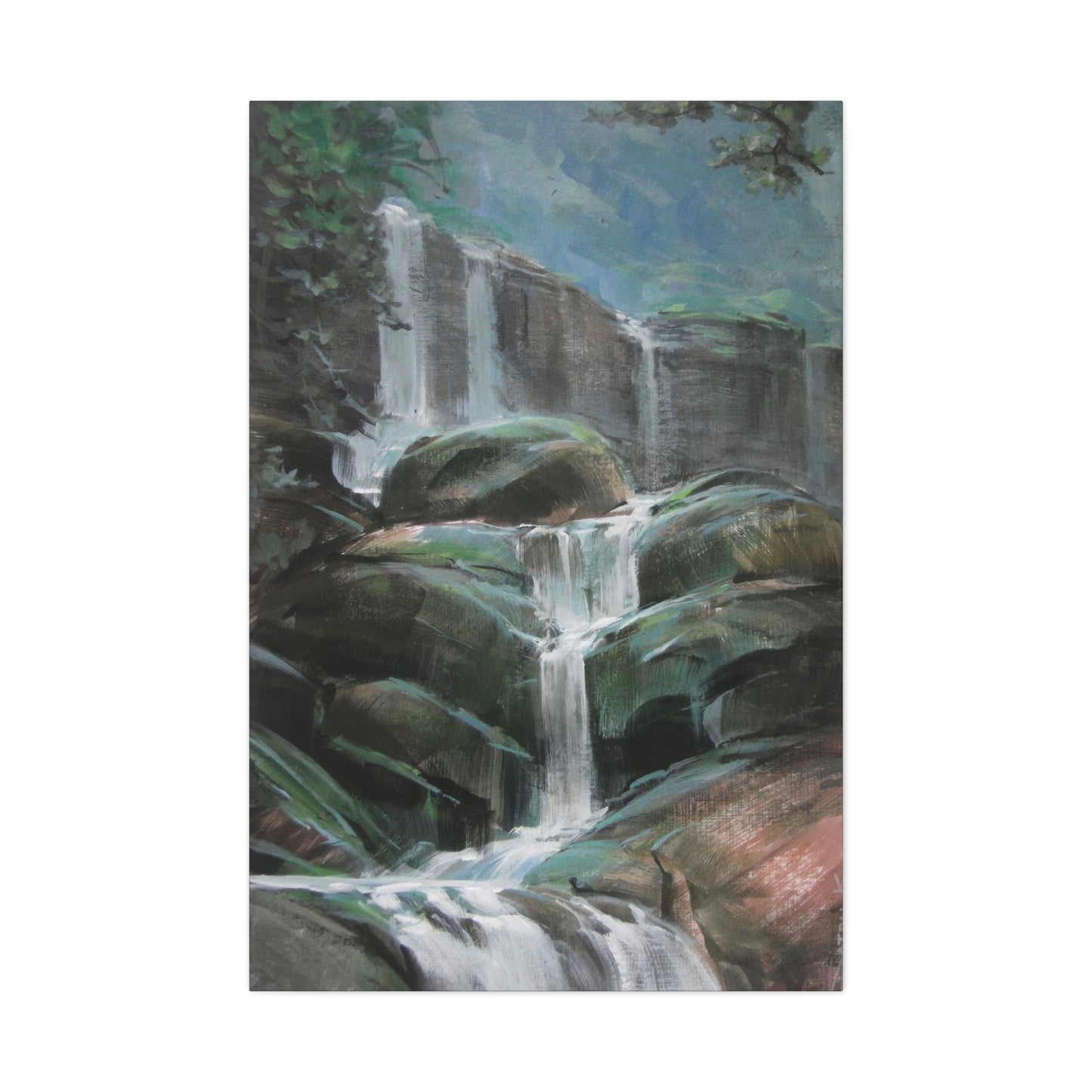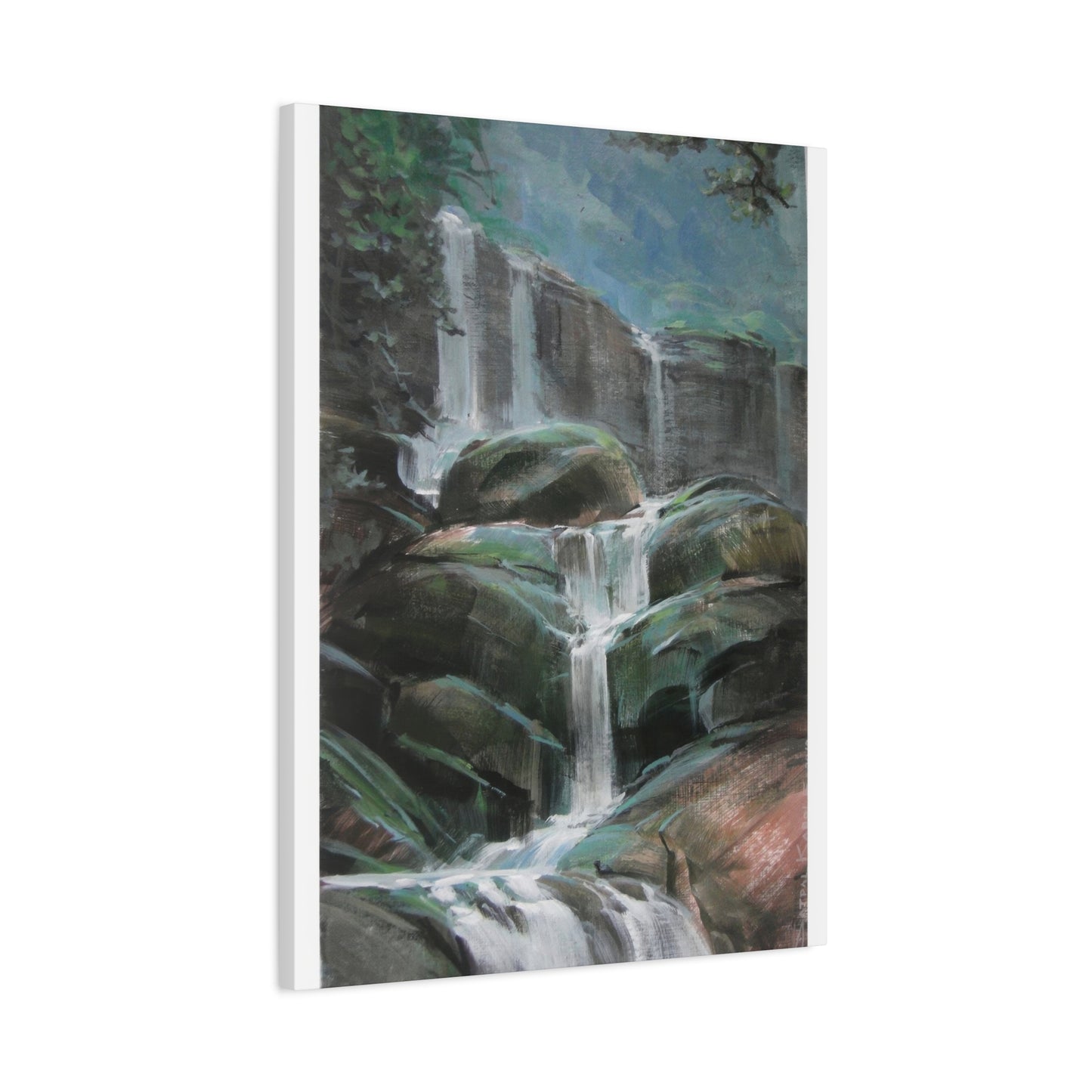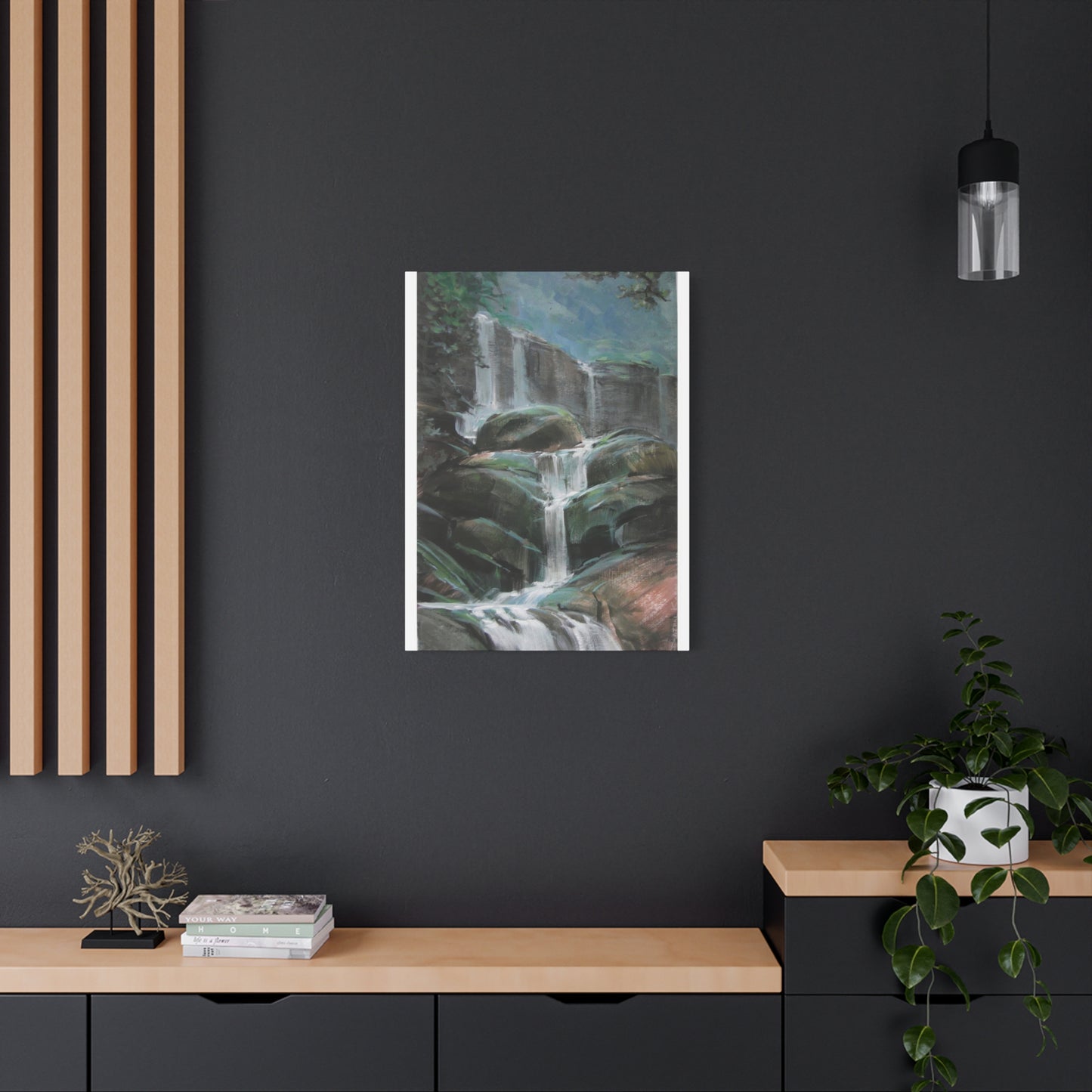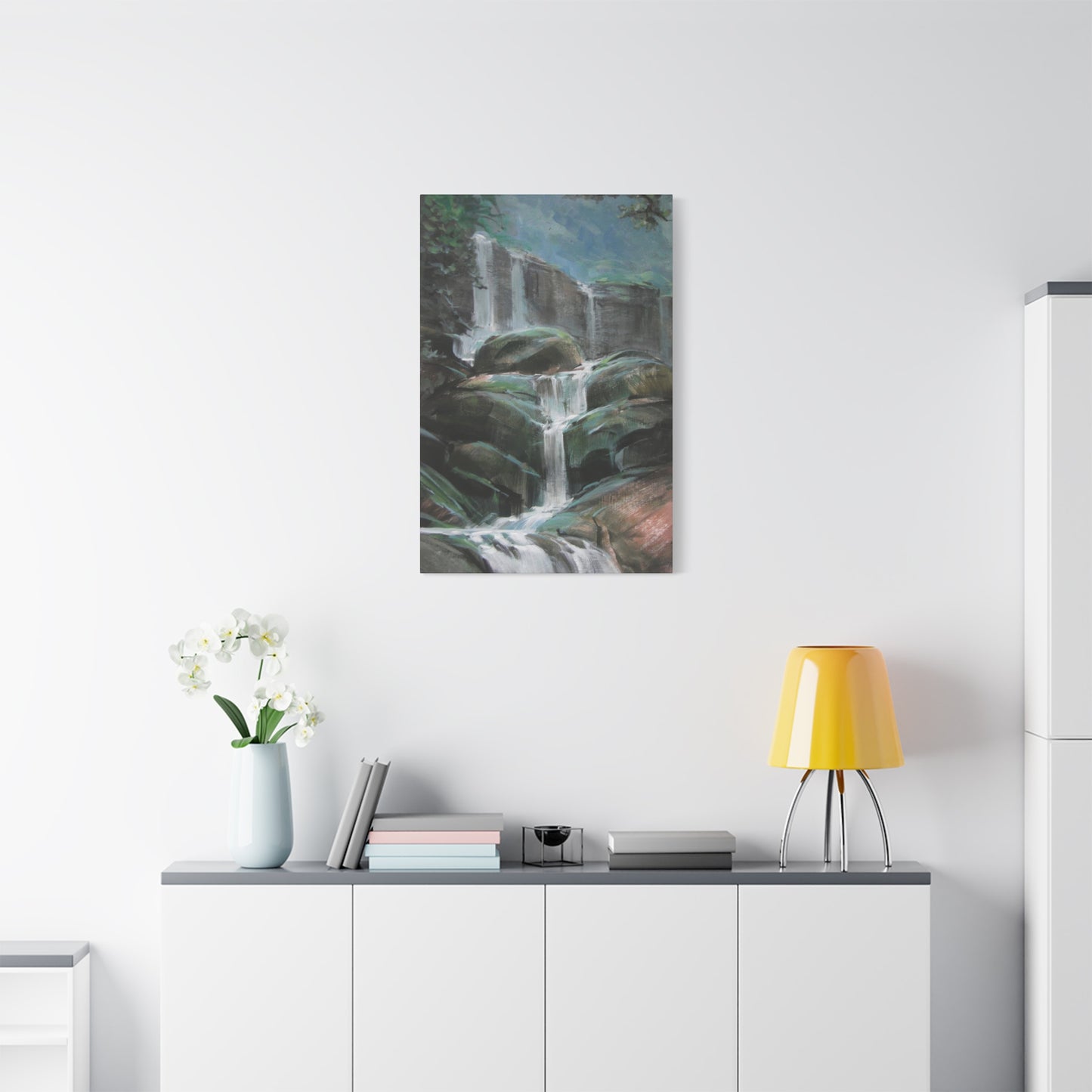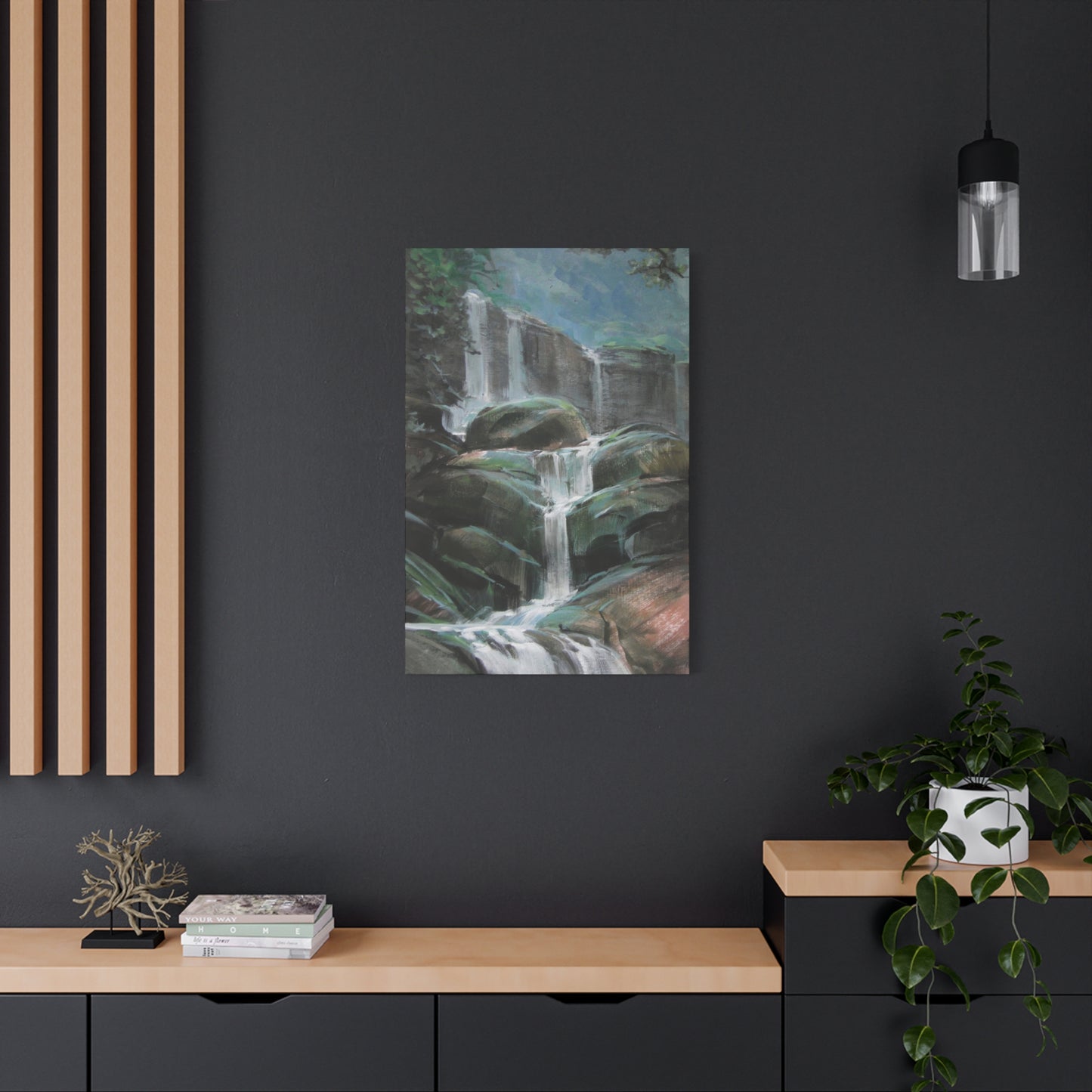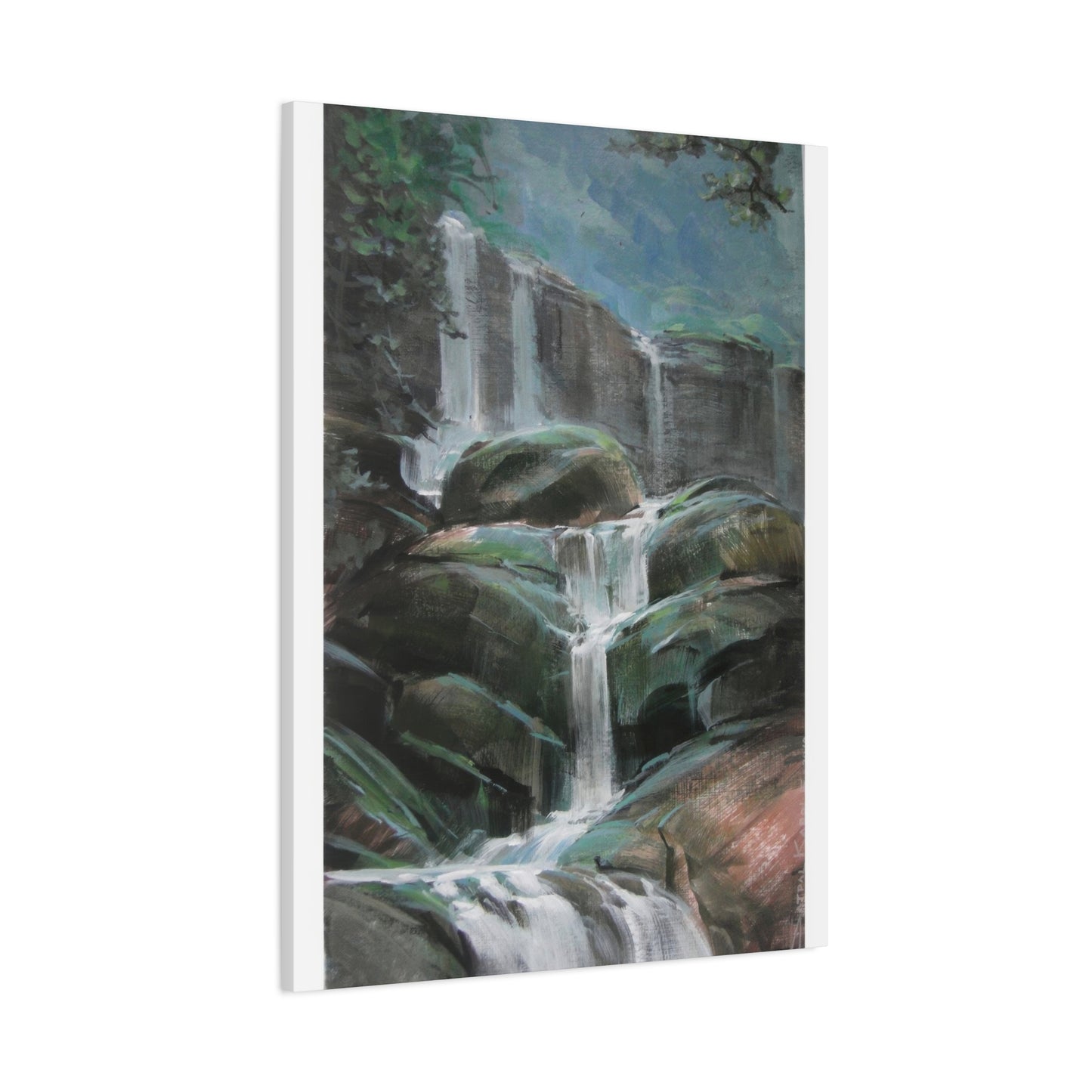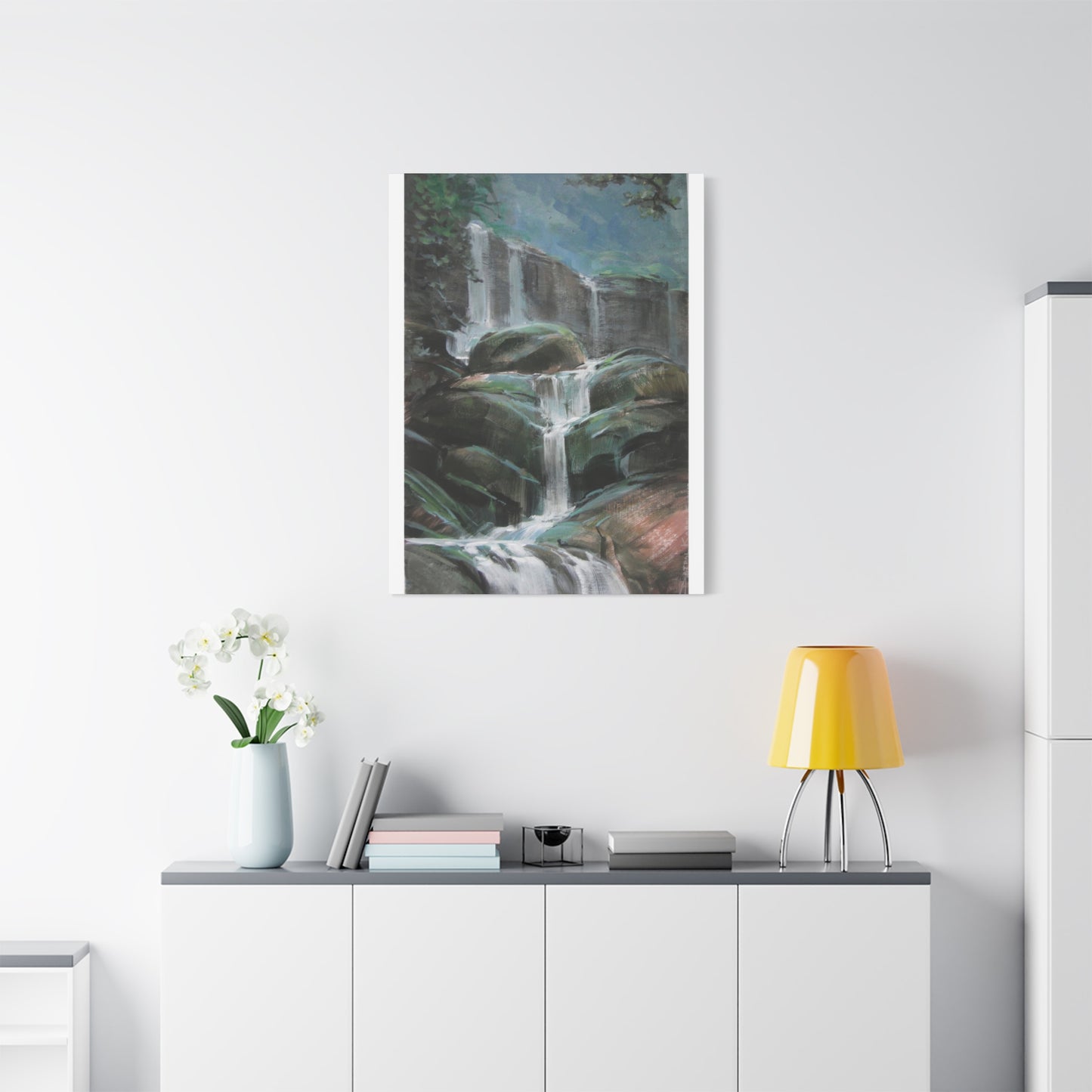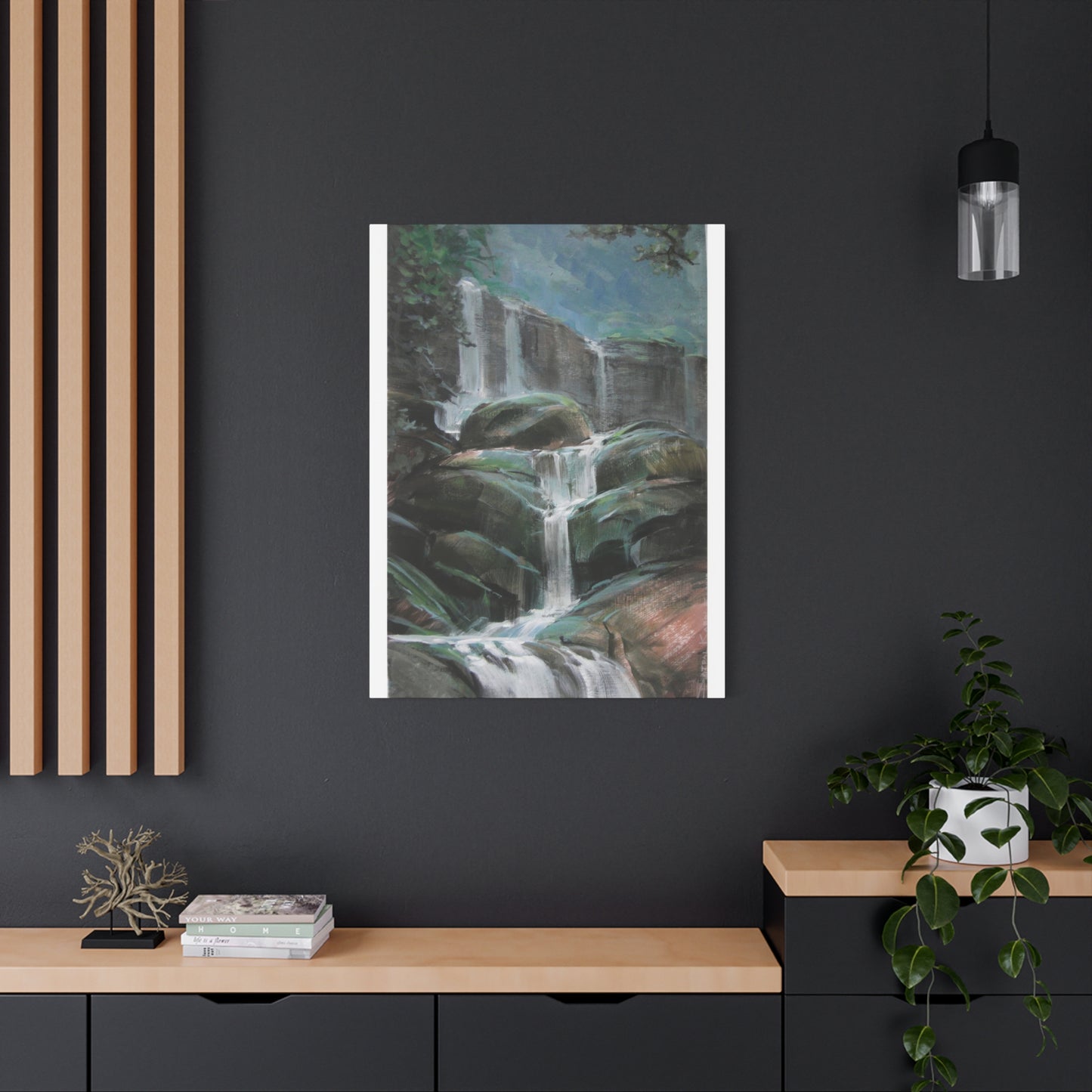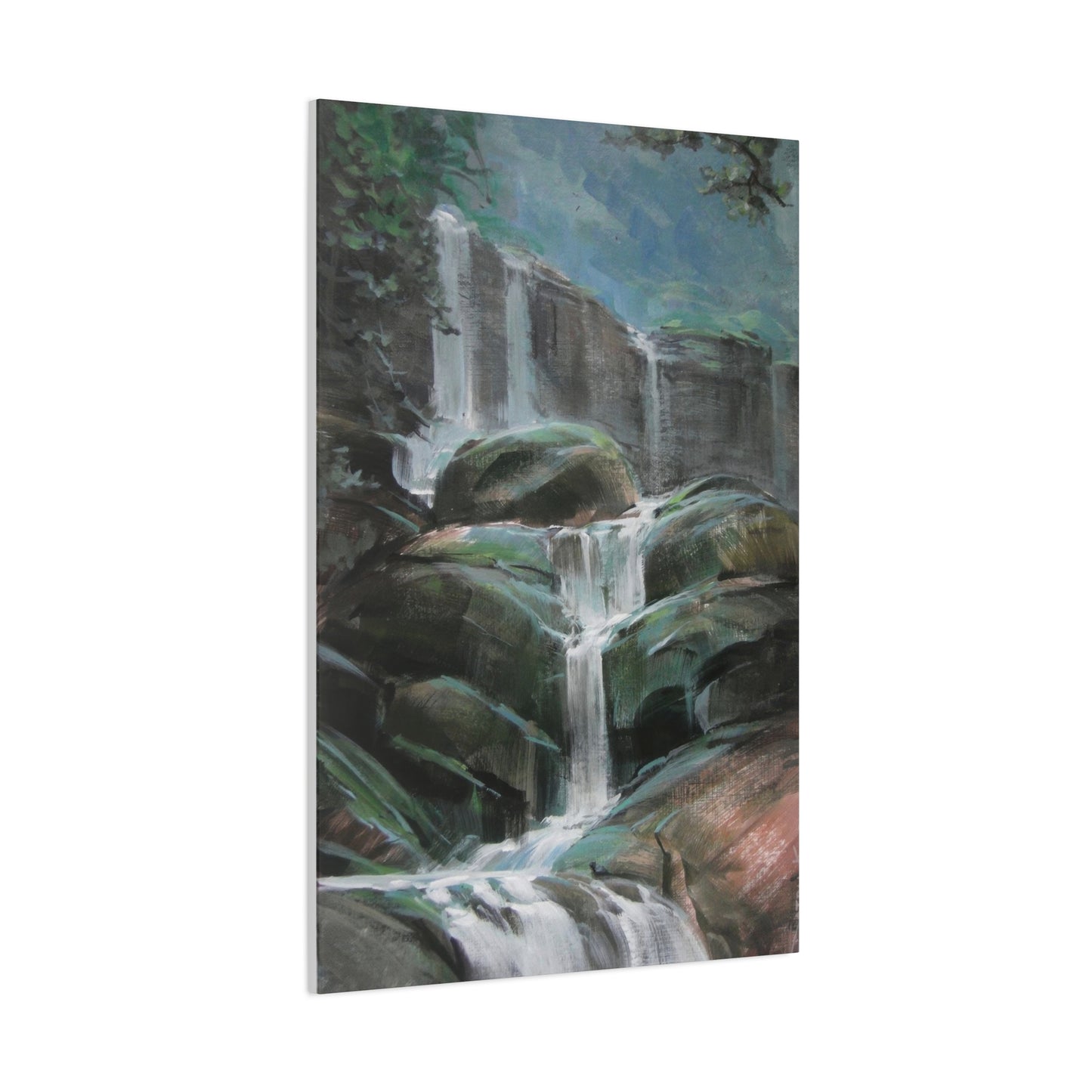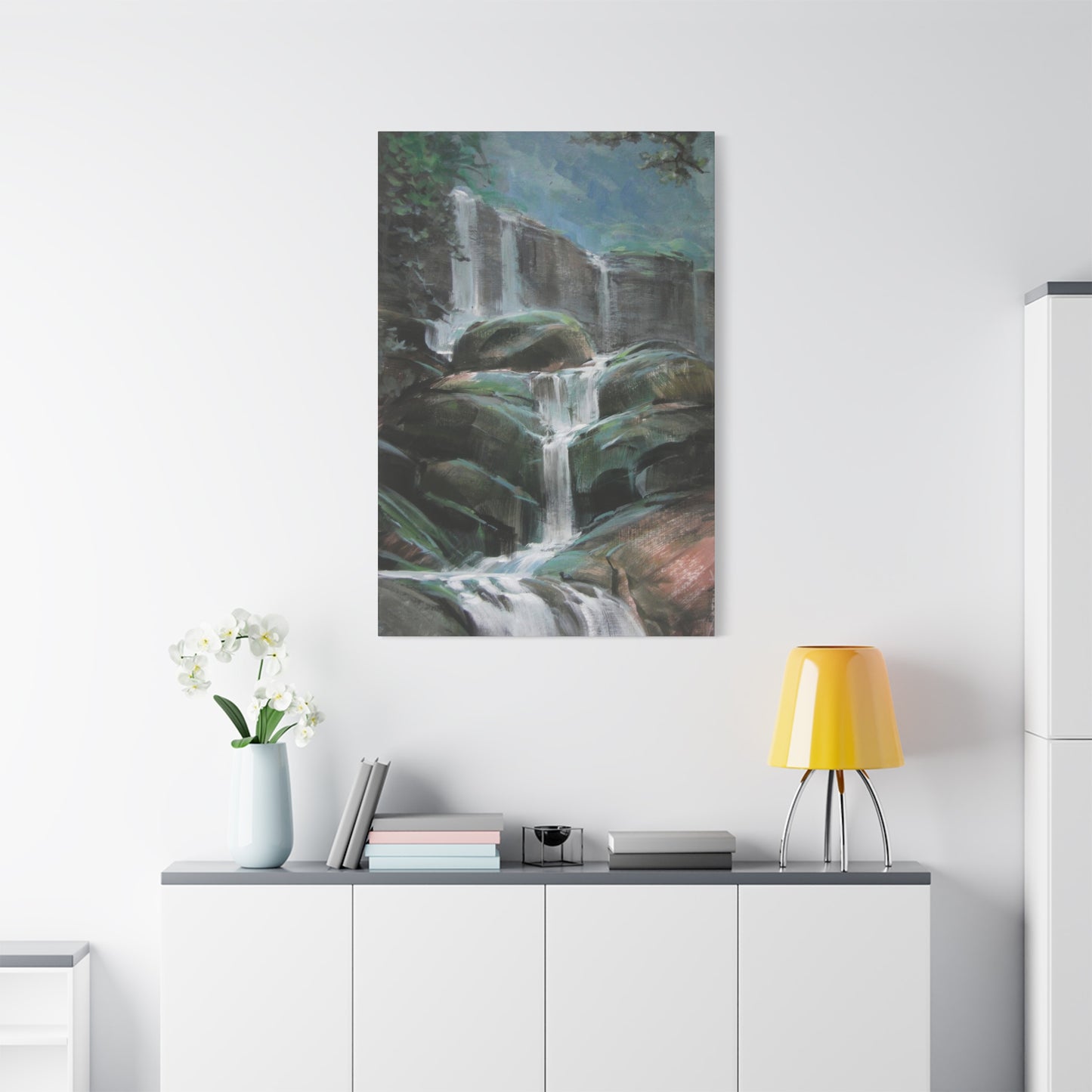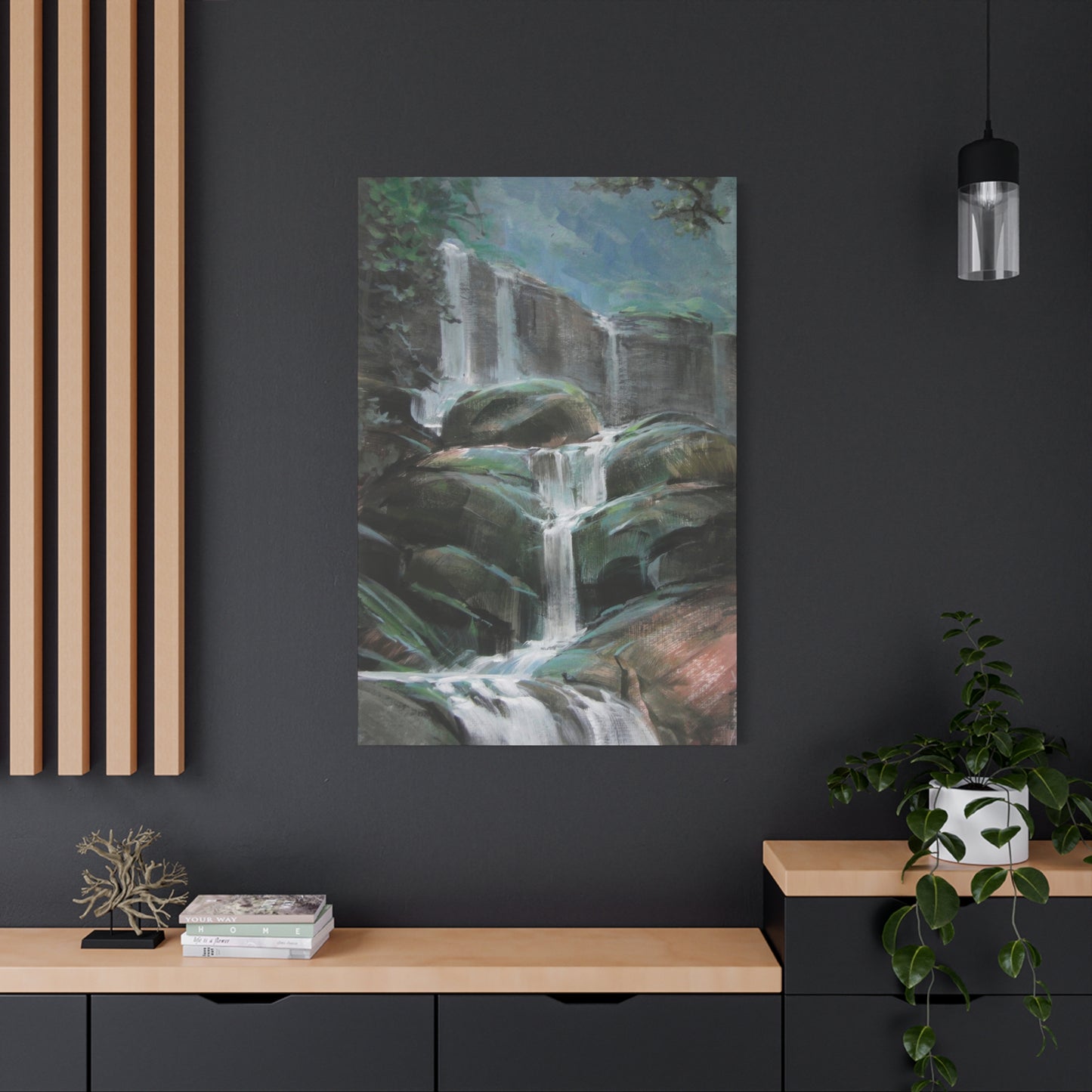Photography Meets Abstraction: Turning Real Waterfalls into Deconstructed Wall Art
The world of interior design continuously evolves, bringing fresh perspectives to traditional concepts. Among the most captivating trends emerging in contemporary home decoration is deconstructed falls wall art, a revolutionary approach that reimagines cascading water imagery through abstract and fragmented compositions. This innovative artistic style breaks down the conventional representation of waterfalls into component elements, creating visually stunning pieces that capture movement, energy, and natural beauty in unexpected ways.
Deconstructed falls wall art represents more than just another decorative trend. It embodies a philosophical shift in how we perceive and represent nature within our living spaces. By fragmenting the traditional waterfall image into separate panels, layers, or abstract elements, artists and designers create dynamic installations that engage viewers from multiple angles and perspectives. This approach transforms static wall decoration into an interactive visual experience that changes based on lighting conditions, viewing distance, and individual interpretation.
The appeal of deconstructed falls wall art lies in its versatility and adaptability to various interior design styles. Whether your home features minimalist Scandinavian aesthetics, industrial loft characteristics, bohemian eclecticism, or traditional elegance, there exists a deconstructed falls interpretation that complements and enhances your existing decor. The fragmented nature of these pieces allows for customization in scale, color palette, and arrangement, making them suitable for spaces ranging from compact urban apartments to expansive suburban homes.
Understanding the principles behind deconstructed falls wall art enables homeowners, decorators, and design enthusiasts to make informed decisions about incorporating these pieces into their spaces. This comprehensive exploration examines every aspect of this artistic movement, from its conceptual foundations and aesthetic variations to practical installation considerations and styling recommendations. By delving deeply into the world of deconstructed falls wall art, you will gain the knowledge necessary to select, display, and appreciate these remarkable pieces that bring the dynamic energy of cascading water into modern interiors.
Understanding the Concept of Deconstructed Falls Wall Art
Deconstructed falls wall art fundamentally reimagines how cascading water can be represented in two-dimensional form. Rather than presenting a complete, photorealistic image of a waterfall, this artistic approach fragments the imagery into separate components that, when viewed collectively, suggest the movement, sound, and energy of falling water. The deconstruction process involves breaking down traditional waterfall representations into abstract elements such as vertical lines suggesting water streams, geometric shapes representing rocks and landscape features, color gradients mimicking the transition from rushing water to mist, and textural components evoking the tactile qualities of natural stone and flowing liquid.
This artistic philosophy draws inspiration from several influential art movements throughout history. Cubism, with its revolutionary approach to depicting subjects from multiple perspectives simultaneously, provides a foundational concept for deconstructed falls art. The cubist practice of fragmenting objects and reassembling them in abstracted forms directly parallels how waterfall imagery is broken down and reconfigured in contemporary wall art. Deconstructivism in architecture also influences this artistic style, particularly in its emphasis on fragmentation, distortion, and departure from traditional forms. The architectural principle of challenging conventional structures translates effectively into wall art that disrupts expected waterfall representations.
Abstract expressionism contributes to deconstructed falls wall art through its focus on emotional resonance and gestural marks rather than literal representation. Artists working in this style prioritize capturing the feeling and energy of cascading water over creating accurate depictions. The spontaneous brushstrokes, drips, and splashes characteristic of abstract expressionism perfectly convey the dynamic, unpredictable nature of waterfalls. Minimalism also plays a significant role, particularly in deconstructed falls pieces that reduce waterfall imagery to its most essential elements, using limited color palettes and simplified forms to suggest cascading water through minimal visual means.
The conceptual framework of deconstructed falls wall art also relates to Japanese aesthetic principles, particularly the concept of ma, which refers to negative space and the intervals between objects. In deconstructed waterfall compositions, the spaces between panels or elements become as important as the images themselves, creating visual breathing room that allows each component to resonate individually while contributing to the overall composition. This approach reflects the Japanese appreciation for suggestion over explicit statement, allowing viewers to mentally complete the waterfall image based on the fragmented elements presented.
Development of Waterfall Representation in Art
The artistic representation of waterfalls spans millennia, with each cultural and historical period approaching this natural phenomenon through distinct aesthetic frameworks. Ancient civilizations incorporated waterfall imagery into religious and ceremonial contexts, recognizing the spiritual significance of cascading water. Chinese landscape painting traditions, particularly during the Tang and Song dynasties, elevated waterfall depiction to high art form. Master painters like Fan Kuan and Guo Xi created monumental hanging scrolls featuring towering mountain waterfalls that symbolized the relationship between humanity and nature, the permanence of mountains contrasted with the eternal flow of water representing philosophical concepts about time and existence.
Japanese artists developed their own distinctive approach to waterfall representation, influenced by Chinese traditions but incorporating uniquely Japanese sensibilities. The ukiyo-e woodblock print tradition produced some of the most iconic waterfall images in art history, with artists like Katsushika Hokusai creating his famous series depicting waterfalls throughout Japan. These prints demonstrated remarkable technical innovation in representing flowing water through curved lines, gradations of color, and strategic use of negative space. The simplified, almost graphic quality of ukiyo-e waterfall prints anticipated certain aspects of modern deconstructed approaches, reducing complex natural phenomena to essential visual elements.
European artistic traditions approached waterfall imagery differently, with Romantic era painters like Joseph Mallord William Turner and Caspar David Friedrich incorporating dramatic waterfall scenes into sublime landscape compositions. These works emphasized the overwhelming power of nature and the emotional responses it evoked in human observers. Turner's later, more abstract waterfall paintings, with their dissolution of form into light and color, represent a significant step toward deconstructed representation. His technique of suggesting rather than explicitly depicting landscape features through atmospheric effects and gestural brushwork prefigured twentieth-century approaches to natural subject matter.
The advent of photography in the nineteenth century revolutionized waterfall representation, introducing new possibilities and challenges for artistic interpretation. Early photographers like Carleton Watkins and Eadweard Muybridge captured iconic American waterfalls such as Yosemite Falls with unprecedented detail and accuracy. These photographic images established visual templates for waterfall representation that persist in popular consciousness. However, the very completeness of photographic representation also created opportunities for artistic reaction, encouraging painters to explore more interpretive, less literal approaches to waterfall imagery that emphasized subjective experience over objective documentation.
Aesthetic Variations in Deconstructed Falls Wall Art
Deconstructed falls wall art manifests in numerous aesthetic variations, each offering distinct visual characteristics and emotional qualities. Understanding these variations helps in selecting pieces that align with specific design visions and spatial requirements. Photographic deconstructed falls art begins with actual waterfall photographs that are then digitally manipulated, fragmented, or abstracted. This approach maintains connection to recognizable waterfall imagery while introducing contemporary artistic intervention. Techniques include dividing a single waterfall photograph across multiple panels with intentional gaps between sections, applying selective focus to different areas of a waterfall image across separate panels, extracting and isolating specific elements like water spray or rock formations, color grading different sections with distinct tonal relationships, and overlaying graphic elements onto photographic bases.
The photographic approach appeals to those who appreciate natural imagery but desire contemporary presentation. These pieces work particularly well in spaces that already incorporate natural materials and organic textures, creating visual continuity between decorative elements and architectural features. The recognizable waterfall imagery provides accessibility for viewers less familiar with abstract art while the deconstructed presentation offers visual sophistication that elevates the work beyond conventional nature photography.
Abstract deconstructed falls art interprets cascading water through purely non-representational means, using color, line, texture, and composition to evoke waterfall qualities without depicting recognizable imagery. Artists working in this mode might employ vertical drips and runs of paint suggesting water flow, layered translucent washes creating depth and atmosphere, gestural brushstrokes conveying movement and energy, geometric forms arranged in cascading configurations, or textural techniques mimicking water's tactile qualities. Abstract approaches offer maximum flexibility for color customization and stylistic integration with diverse interior design schemes. These pieces function as focal points that introduce dynamic energy without overwhelming spaces with overly literal natural imagery.
Geometric deconstructed falls art applies mathematical precision and systematic organization to waterfall representation. This variation features clean lines, defined shapes, and carefully calculated proportions. Common characteristics include rectangular or triangular panels arranged in descending patterns, gradient progressions representing water's transition from source to destination, symmetrical or asymmetrical compositions based on mathematical relationships, incorporation of metallic or reflective materials suggesting water's surface, and precise color blocking in limited palettes. Geometric approaches suit contemporary, minimalist, and mid-century modern interiors, complementing architectural features with clean lines and uncluttered forms. These pieces appeal to viewers who appreciate order, precision, and intentional design over spontaneous expression.
Material Considerations for Deconstructed Falls Wall Art
The materials used in creating and presenting deconstructed falls wall art significantly impact both aesthetic qualities and practical considerations including durability, maintenance requirements, and installation methods. Canvas remains one of the most popular substrates for deconstructed falls art, offering several advantages. Canvas stretched over wooden frames creates traditional presentation with slight three-dimensional depth. The textile surface accepts various media including acrylic and oil paints, digital prints, and mixed media applications. Canvas texture adds visual interest and tactile quality that enhances certain artistic styles. Gallery-wrapped canvas, where the image continues around frame edges, eliminates the need for additional framing. Canvas pieces are relatively lightweight, simplifying installation. However, canvas requires protection from moisture and direct sunlight to prevent deterioration over time.
Metal prints represent increasingly popular contemporary alternatives, particularly for photographic and geometric deconstructed falls art. Printing directly onto aluminum or other metal surfaces creates extraordinary color vibrancy, depth, and luminosity. Metal's reflective properties enhance the illusion of water's shimmering, light-catching qualities. These prints offer exceptional durability, resisting fading, moisture, and physical damage. The sleek, modern appearance of metal prints complements contemporary and industrial interior styles. Metal prints can be mounted directly to walls without additional framing, creating clean, floating presentations. The material naturally resists warping and maintains flat surfaces even in large formats. However, metal prints typically cost more than canvas or paper alternatives and require professional printing services with specialized equipment.
Acrylic and glass presentations create sophisticated, gallery-quality appearances particularly suited to high-end residential and commercial installations. Face-mounting prints behind acrylic or glass protects images while creating remarkable depth and luminosity. The smooth, reflective surfaces enhance color saturation and create jewel-like quality. These presentations work exceptionally well for photographic deconstructed falls art where clarity and detail are priorities. Acrylic offers lighter weight than glass with comparable optical qualities and superior impact resistance. Both materials provide excellent UV protection when treated, preventing image fading. The contemporary, finished appearance eliminates framing needs in many cases. However, these presentations require careful handling during installation due to size and fragility, show fingerprints and require regular cleaning, and represent higher investment than simpler presentations.
Scale and Proportion Considerations
Selecting appropriately scaled deconstructed falls wall art ensures visual balance and maximum impact within specific spaces. Understanding scale relationships between artwork, walls, and surrounding furnishings prevents common mistakes including pieces appearing lost on large walls or overwhelming small spaces. For small walls and compact spaces measuring eight feet or less in length, consider single panel pieces ranging from twenty to thirty-six inches in width, vertical orientations maximizing limited wall height, multi-panel arrangements with smaller individual components, and pieces that don't extend furniture width, allowing visual breathing room. Small-scale deconstructed falls art works well above nightstands, in narrow hallways, flanking windows or architectural features, and in gallery wall arrangements combining multiple smaller pieces.
Medium walls spanning eight to twelve feet accommodate more substantial single pieces or multi-panel arrangements. Optimal dimensions include single canvases ranging from forty to sixty inches wide, two-panel arrangements with each panel measuring twenty-four to thirty-six inches, three-panel configurations with coordinated sizing creating balanced horizontal emphasis, and pieces that span two-thirds to three-quarters of furniture width below them. Medium-scale deconstructed falls art suits living room focal walls, dining room feature walls, primary bedroom headboard walls, and home office inspirational spaces. These proportions create substantial presence without overwhelming surrounding elements.
Large walls exceeding twelve feet and expansive open spaces demand appropriately scaled artwork preventing them from appearing insignificant against vast wall expanses. Options include oversized single panels reaching seventy-two inches or more in width, multi-panel installations spanning entire wall sections, floor-to-ceiling vertical arrangements emphasizing room height, and custom commissioned pieces specifically proportioned for particular spaces. Large-scale deconstructed falls art creates dramatic focal points in great rooms, two-story entryways, commercial lobbies and reception areas, and hospitality environments including hotels and restaurants. These installations require professional installation and substantial investment but deliver unparalleled visual impact.
Ceiling height significantly influences appropriate artwork scale. Standard eight-foot ceilings limit vertical dimension, favoring horizontal orientations or moderately sized vertical pieces. Nine-foot ceilings offer more flexibility, accommodating taller vertical pieces without overwhelming spaces. Ten-foot or higher ceilings invite dramatic vertical arrangements, floor-to-ceiling installations, or oversized pieces that leverage available height. When selecting deconstructed falls art for specific ceiling heights, ensure adequate space above furniture pieces, maintain appropriate distance from ceiling, avoid blocking architectural features, and consider sightlines from various positions within rooms.
Styling Deconstructed Falls Wall Art in Various Interior Design Styles
Deconstructed falls wall art adapts remarkably well to diverse interior design aesthetics when selected and styled appropriately. Understanding how to integrate these pieces into specific design contexts ensures cohesive, intentional spaces rather than disjointed eclectic collections. In minimalist interiors characterized by restraint, clean lines, limited color palettes, and emphasis on essential elements, deconstructed falls art should reflect these principles. Choose monochromatic or limited color palette pieces that harmonize with existing schemes. Select geometric or abstract interpretations rather than complex photographic compositions. Opt for simple presentation without ornate framing or embellishment. Position artwork as singular focal point rather than part of gallery wall clusters. Ensure adequate negative space surrounding artwork allowing it visual breathing room. Minimalist styling celebrates quality over quantity, making carefully selected deconstructed falls art powerful focal elements in uncluttered environments.
Contemporary interiors embrace current design trends including mixed materials, bold colors, clean lines with occasional curves, and emphasis on art and statement pieces. Deconstructed falls art naturally complements contemporary aesthetics through its modern interpretation of traditional subject matter. Select pieces with current color trends including jewel tones, muted earth palettes, or high-contrast combinations. Choose mixed media or multi-material compositions reflecting contemporary material exploration. Consider oversized scale creating dramatic impact characteristic of contemporary design. Coordinate metallic accents in artwork with hardware, fixtures, and furniture finishes. Position artwork as primary focal point supported by complementary furnishings rather than competing elements. Contemporary styling allows deconstructed falls art to shine as sophisticated centerpiece in thoughtfully curated spaces.
Industrial interiors feature exposed architectural elements, raw materials, neutral color palettes with metal accents, and blend of vintage and modern pieces. Deconstructed falls art can introduce organic contrast to hard industrial elements. Select pieces with metal substrates or frames complementing industrial materials. Choose neutral or monochromatic color palettes harmonizing with typical industrial schemes. Consider geometric interpretations with clean lines echoing architectural qualities. Pair artwork with industrial-style furniture pieces in balanced arrangements. Use exposed mounting hardware or industrial hanging systems as design features rather than hidden elements. Industrial styling benefits from deconstructed falls art's ability to soften hard surfaces while maintaining contemporary edge appropriate to aesthetic.
Scandinavian design emphasizes light, natural materials, functional beauty, connection to nature, and hygge comfort principles. Deconstructed falls art naturally aligns with Scandinavian nature appreciation and minimalist aesthetics. Choose pieces in typical Scandinavian palettes including whites, grays, soft blues, and natural wood tones. Select simple compositions without excessive complexity or ornamentation. Prefer natural materials including wood substrates and organic framing options. Position artwork where natural light enhances rather than damages it. Combine with plants and natural textiles reinforcing nature connection. Scandinavian styling celebrates deconstructed falls art's ability to bring natural beauty indoors through contemporary interpretation.
Room-Specific Application Strategies
Different rooms serve distinct functions and create varied atmospheres, influencing how deconstructed falls wall art should be selected and positioned. Living rooms function as primary gathering spaces for family and guests, requiring artwork that creates welcoming atmospheres, provides conversation starters, and complements diverse activities from entertaining to relaxing. Position deconstructed falls art as focal point above sofas or on walls visible from main entry points. Select scale appropriate to room size with larger spaces accommodating substantial pieces or multi-panel installations. Choose color palettes complementing existing furniture and textiles while introducing visual interest. Consider pieces with moderate visual complexity engaging without overwhelming. Balance artwork with other living room elements including windows, fireplaces, and media centers. Living room deconstructed falls art should feel substantial enough to anchor spaces while maintaining welcoming, approachable qualities.
Bedrooms serve as personal retreats prioritizing relaxation, sleep quality, and individual expression. Deconstructed falls art in bedrooms should promote calming, restorative atmospheres through careful selection. Choose predominantly cool color palettes including blues, greens, and neutrals supporting relaxation. Select compositions with flowing, organic qualities rather than sharp geometric forms. Position artwork on walls visible from bed creating pleasant focal points for waking and sleeping moments. Avoid overly stimulating or complex pieces that might interfere with sleep. Consider pieces with personal meaning or emotional resonance. Scale artwork appropriately to bed size and wall proportions. Bedroom deconstructed falls art functions as personal sanctuary enhancement rather than public statement piece.
Home offices require artwork supporting focus, creativity, and professional atmosphere while reflecting personal interests. Deconstructed falls art can provide inspiring focal points without creating distraction. Choose pieces with colors supporting concentration including blues and greens promoting calm focus or energizing but not overwhelming colors like teal. Select compositions with balanced complexity providing visual interest during work breaks without demanding constant attention. Position artwork in sightlines from desk allowing occasional viewing without dominating primary work areas. Consider pieces with personal meaning providing motivation or inspiration. Scale appropriately to office size and furniture proportions. Home office deconstructed falls art should enhance productivity and creative thinking while establishing professional yet personal environments.
Dining rooms create environments for meals and conversation, requiring artwork that enhances dining experiences without interfering with food presentation. Deconstructed falls art in dining rooms should complement rather than compete with culinary elements. Choose pieces with sophisticated color palettes avoiding colors that might affect food appeal. Select compositions appropriate to formal or casual dining atmospheres matching room's typical use. Position artwork centering on walls behind or adjacent to dining tables at heights appropriate for seated viewing. Avoid pieces with textures or materials susceptible to cooking moisture or odors. Consider lighting ensuring artwork remains visible during evening dining. Dining room deconstructed falls art contributes to meal ambiance and provides conversation topics for gathered guests.
Creating Gallery Walls with Deconstructed Falls Art
Gallery walls have emerged as popular design solutions allowing creative artwork display while filling large wall expanses with collected pieces rather than single large artworks. Incorporating deconstructed falls art into gallery wall arrangements requires thoughtful planning balancing cohesion with visual interest. Gallery walls can feature exclusively deconstructed falls pieces in various sizes, styles, or color variations creating thematic consistency while avoiding monotony. Alternatively, deconstructed falls art can anchor mixed gallery walls combining photographs, prints, paintings, and three-dimensional objects united by color palette, framing style, or conceptual themes.
When planning gallery walls featuring deconstructed falls art, begin by collecting or selecting all potential pieces before installation. Lay pieces on floor arranging and rearranging until achieving satisfying composition. Create paper templates matching each piece's dimensions and tape them to walls testing arrangements without making permanent holes. Photograph various arrangements comparing options and soliciting opinions. Consider overall shapes gallery walls will create including organic clusters, geometric grids, linear progressions, or salon-style arrangements covering entire walls floor to ceiling.
Balance represents critical consideration in successful gallery walls. Visual weight distribution should feel equilibrated even if not perfectly symmetrical. Larger, darker, or more complex pieces carry more visual weight requiring balancing with multiple smaller or lighter pieces. Color distribution should feel intentional with similar hues dispersed throughout arrangements rather than clustering in single areas. Frame and mat styles should relate coherently whether matching exactly or varying within defined parameters. Spacing between pieces can remain consistent creating orderly appearance or vary creating more organic, collected feeling.
Grid arrangements organize pieces in orderly rows and columns with consistent spacing between all elements. This approach suits contemporary and modern interiors appreciating structure and order. Grid gallery walls work particularly well with deconstructed falls art when pieces share similar sizing or maintain complementary proportions. The structured format allows even eclectic content to feel cohesive through organizational consistency. Grid arrangements require precise measurement and installation ensuring perfect alignment, but result in clean, intentional appearances that showcase artwork systematically.
Salon-style arrangements reference historical European galleries where artwork covered walls floor to ceiling in dense configurations. This maximalist approach celebrates art abundance and creates dramatic visual impact. Salon gallery walls incorporating deconstructed falls art should maintain some unifying elements preventing chaotic appearance. Common framing styles, consistent color families, or thematic connections help salon arrangements feel curated rather than random. This approach particularly suits eclectic, maximalist, or traditional interiors embracing decorative richness. Salon walls require confidence and commitment but deliver extraordinary visual interest.
Linear arrangements organize artwork in single horizontal rows or vertical columns creating clean, contemporary presentations. Horizontal linear gallery walls work particularly well above long furniture pieces like sofas, console tables, or buffets. Vertical linear arrangements suit narrow wall spaces beside doorways, windows, or between architectural features. Linear configurations featuring deconstructed falls art create ordered progressions that can suggest narrative sequences or tonal variations. This approach suits various design styles from minimalist to traditional depending on spacing and framing choices.
Custom Deconstructed Falls Wall Art
While abundant ready-made deconstructed falls art exists through various retailers and online marketplaces, commissioning custom pieces offers unique advantages including perfect sizing for specific spaces, personalized color palettes matching existing decor, meaningful subject matter selection, exclusive ownership of original artwork, and collaborative creative processes with artists. Understanding commission processes, costs, and considerations enables successful partnerships with artists creating ideal pieces for particular environments.
Finding artists capable of executing deconstructed falls commissions begins with research across multiple channels. Online artist platforms and marketplaces feature portfolios allowing style evaluation. Social media, particularly visually focused platforms, showcases contemporary artists and their work. Local art galleries represent regional artists accepting commissions. Art schools and universities employ faculty artists and graduating students seeking commission opportunities. Professional artist organizations provide member directories searchable by medium and style. When evaluating potential artists for deconstructed falls commissions, review portfolios assessing whether their existing work demonstrates capabilities needed for desired pieces, communicate initially gauging responsiveness and professionalism, verify experience with commissioned work understanding unique demands, request references from previous commission clients, and discuss timelines ensuring artist availability aligns with project needs.
Commission processes typically follow established sequences though specific steps vary among artists. Initial consultations establish project parameters including desired sizing, color preferences, style directions, subject specifications, timeline requirements, and budget constraints. Artists may present preliminary sketches, digital mockups, or material samples ensuring shared vision before beginning actual artwork. Formal agreements or contracts specify project details including exact dimensions, materials and techniques, color specifications, completion timelines, payment schedules, and revision allowances. Progress updates at predetermined stages allow client input without micromanaging creative process. Final approval before completion ensures satisfaction before artwork leaves artist's studio. Delivery or installation arrangements specify responsibility and methods for transporting and placing finished work.
Commission pricing varies tremendously based on artist reputation and experience, artwork size and complexity, materials and techniques employed, timeline urgency, and inclusion of installation services. Emerging artists charge lower rates than established professionals but may lack experience managing commission relationships. Typical pricing structures include flat project fees covering all aspects, hourly rates multiplied by estimated completion time, square footage rates for scaled pricing, or cost-plus arrangements covering materials plus labor markup. Commission deposits typically range from twenty-five to fifty percent of total project cost paid upon contract signing. Progress payments at predetermined stages maintain artist cash flow. Final payments upon completion and approval represent remaining balance. Discuss all pricing details clearly before beginning work preventing misunderstandings about costs and payment expectations.
Subject matter selection for commissioned deconstructed falls art allows personalization connecting artwork to meaningful locations, experiences, or aesthetic preferences. Commissions based on specific waterfall locations create sentimental connections to places holding personal significance. Artists can work from photographs you provide or research locations creating interpretive representations. Style direction specifications ensure commissioned pieces complement existing decor and personal taste. Providing artists with room photographs, color swatches, and style preference examples facilitates appropriate creative responses. Collaborative approaches allow artists creative freedom within defined parameters producing unexpected but appropriate results. Clear communication about subject preferences, style expectations, and acceptable interpretation ranges prevents disappointing outcomes.
Seasonal and Thematic Variations
Deconstructed falls wall art adapts remarkably well to seasonal rotations and thematic variations, allowing homeowners to refresh spaces without major decorating overhauls. This approach keeps interiors feeling current and responsive to changing seasons while maintaining investment in quality artwork that rotates rather than replaces permanently. Seasonal artwork rotation introduces variety preventing visual boredom, celebrates seasonal changes and holidays, allows expression of different aesthetic moods throughout year, and protects year-round displayed pieces from continuous light exposure. Establishing seasonal deconstructed falls collections requires storage solutions for artwork not currently displayed, rotation schedules preventing last-minute scrambling, and versatile installation systems accommodating easy exchanges.
Spring-themed deconstructed falls art celebrates renewal, growth, and awakening nature. Color palettes emphasize fresh greens, soft pastels, and light, airy tones. Compositions suggest gentle flows and emerging vitality rather than dramatic cascades. Pieces might incorporate floral elements, budding vegetation, or references to spring rainfall. Spring deconstructed falls art creates optimistic, revitalizing atmospheres as nature awakens from winter dormancy. These pieces work particularly well in sunrooms, breakfast areas, and spaces benefiting from fresh, energetic moods. Installation timing around March equinox marks seasonal transition and introduces lighter color palettes appropriate to lengthening days.
Summer-themed deconstructed falls art captures season's vibrant energy, intense colors, and full natural expression. Color palettes feature saturated blues, lush greens, and warm accent tones. Compositions emphasize dramatic flows, powerful cascades, and dynamic movement. Pieces might suggest cooling relief from summer heat, recreational swimming holes, or vacation destinations. Summer deconstructed falls art creates energetic, vacation-inspired atmospheres celebrating outdoor activities and natural beauty. These pieces suit casual gathering spaces, outdoor living areas visible from indoors, and rooms benefiting from cooling color influences. Installation around June solstice marks peak summer arrival.
Autumn-themed deconstructed falls art reflects seasonal transition, harvests, and nature's preparation for winter rest. Color palettes incorporate warm earth tones, burnt oranges, deep reds, and golden yellows alongside traditional water blues. Compositions might reference falling leaves collecting in waterfall pools, misty morning atmospheres, or cooling temperatures affecting water appearance. Autumn deconstructed falls art creates cozy, contemplative atmospheres appropriate to season's introspective qualities. These pieces complement seasonal decorating with pumpkins, fall foliage, and warm textiles. Installation around September equinox marks summer's end and autumn's arrival, coordinating with broader seasonal decorating transitions.
Winter-themed deconstructed falls art captures season's stark beauty, frozen elements, and dramatic contrasts. Color palettes emphasize cool tones including icy blues, steely grays, crisp whites, and deep winter-sky blues. Compositions might suggest frozen waterfalls, ice formations, winter snow surrounding falls, or dramatic winter light. Winter deconstructed falls art creates serene, contemplative atmospheres celebrating season's unique beauty. These pieces particularly suit formal spaces, cozy reading nooks, and rooms where cooler color palettes complement winter decorating. Installation around December solstice marks winter's arrival and holiday season, though winter pieces typically remain appropriate through February.
Holiday-specific variations allow deconstructed falls art to participate in festive decorating without abandoning waterfall themes. Subtle metallic accents in gold, silver, or copper coordinate with holiday decorating without appearing explicitly seasonal. Color adjustments incorporating traditional holiday colors through creative interpretation maintain artistic integrity. Limited-time displays during specific holiday periods allow dramatic pieces without year-round commitment. Temporary embellishments including removable lighting, floral additions, or decorative overlays transform existing pieces for holiday seasons. Holiday coordination allows deconstructed falls art to remain focal points even during heavily decorated periods rather than being overshadowed or removed.
Maintaining Deconstructed Falls Wall Art
Proper care extends artwork lifespan, preserves aesthetic qualities, and protects investments in quality pieces. Maintenance requirements vary significantly based on materials, presentation methods, and display environments, but general principles apply across most deconstructed falls art types. Regular dusting prevents accumulation damaging surfaces and dulling appearance. Use soft, dry microfiber cloths or artist's brushes for gentle dust removal. Avoid feather dusters potentially scratching surfaces. Dust frames and visible hardware alongside artwork itself. Frequency depends on environmental conditions with dustier environments requiring more frequent attention, typically weekly or biweekly maintenance proving adequate for most conditions.
Cleaning beyond basic dusting requires material-specific approaches preventing damage while removing accumulated dirt and contaminants. Canvas artwork accepts gentle vacuuming with soft brush attachments removing embedded dust from textile surfaces. Avoid liquid cleaners unless specifically formulated for artwork. Professional art conservation specialists can address stubborn soiling. Acrylic and glass surfaces tolerate careful cleaning with appropriate glass cleaners applied to cleaning cloths rather than directly onto artwork preventing liquid seepage. Metal prints accept gentle wiping with slightly dampened microfiber cloths followed by immediate drying. Wood substrates require wood-appropriate cleaning products and techniques avoiding excessive moisture. When uncertain about appropriate cleaning methods, consult artwork sources or professional conservators rather than risking damage through inappropriate techniques.
Light exposure represents the primary environmental threat to artwork longevity. Ultraviolet radiation causes fading, yellowing, and material degradation over time. Minimize direct sunlight exposure particularly during peak hours when UV intensity is greatest. UV-filtering window treatments reduce radiation while maintaining natural light. UV-protective glazing on framed pieces blocks harmful wavelengths. LED lighting eliminates UV radiation compared to traditional incandescent and fluorescent sources. Position artwork away from south-facing windows receiving most intense sun exposure. Rotate displayed pieces periodically distributing light exposure across collections. Monitor for fading signs including color shifts, particularly in blues and reds most susceptible to light damage. Address excessive light exposure promptly preventing irreversible deterioration.
Temperature and humidity control preserves artwork structural integrity and appearance. Extreme temperatures stress materials causing expansion, contraction, and potential warping or cracking. Avoid positioning artwork above heat sources including radiators, heating vents, and fireplaces. Maintain consistent room temperatures avoiding dramatic fluctuations. High humidity promotes mold growth, material deterioration, and adhesive failure. Low humidity causes brittleness and cracking particularly in organic materials. Ideal conditions maintain temperatures between sixty-five and seventy-five degrees Fahrenheit and relative humidity between forty and sixty percent. Climate-controlled environments benefit artwork longevity significantly. In challenging climates, dehumidifiers or humidifiers maintain appropriate moisture levels. Avoid displaying artwork in bathrooms, kitchens, or other high-humidity areas unless specifically designed for such conditions.
Psychological and Emotional Impacts of Water Imagery
The psychological effects of incorporating deconstructed falls wall art extend beyond aesthetic pleasure, influencing mood, stress levels, and overall wellbeing. Understanding these impacts enables intentional artwork selection supporting mental health and emotional equilibrium. Water imagery generally produces calming psychological effects through associations with nature, cleansing, and life essentials. Research in environmental psychology demonstrates that nature representations in indoor environments reduce stress, improve mood, support cognitive function, and promote overall wellbeing even when actual nature access is limited.
Waterfalls specifically evoke powerful psychological responses beyond general water associations. The movement quality suggests vitality, progress, and dynamic energy contrasting with stagnant water associations. Cascade sounds, though obviously absent from visual representations, are often mentally supplied by viewers drawing on memory and imagination. White noise characteristics of waterfall sounds promote relaxation and mask disturbing environmental noises. The visual equivalent of white noise through abstracted waterfall imagery creates similar soothing effects. Waterfall scenes suggest natural settings away from urban stress and modern complications, facilitating mental escape and restoration.
The Japanese concept of shinrin-yoku or forest bathing emphasizes therapeutic benefits of spending time in natural environments. While traditionally involving physical presence in forests, research indicates that nature representations including artwork produce measurable though diminished benefits compared to actual nature exposure. Deconstructed falls wall art brings elements of forest bathing indoors, offering accessible nature connection for urban dwellers, individuals with mobility limitations, or those lacking regular nature access. The abstracted, deconstructed quality may actually enhance benefits by engaging cognitive processes that complete suggested imagery, creating active rather than passive viewing experiences.
Color psychology integrated into deconstructed falls art selection amplifies emotional impacts. Blue, dominating many waterfall representations, reduces stress and anxiety, lowers blood pressure and heart rate, promotes mental clarity and focus, and creates perceptions of spaciousness and calm. Green, representing vegetation surrounding waterfalls, encourages balance and harmony, supports concentration and creativity, connects viewers to growth and renewal, and reduces eye strain and visual fatigue. White, suggesting water spray and foam, enhances feelings of cleanliness and freshness, promotes mental clarity and openness, increases perceived brightness and spaciousness, and suggests purity and new beginnings. Strategic color selection in deconstructed falls art targets specific psychological effects supporting desired emotional atmospheres within spaces.
Movement perception in deconstructed falls art creates psychological effects distinct from static imagery. Even though artwork itself remains motionless, compositional elements suggesting downward flow, cascading progression, and dynamic energy activate perceptual systems responding to motion. This engagement promotes mental stimulation without overwhelming intensity, maintaining interest over extended viewing periods. The suggested movement also creates sense of liveliness and vitality within spaces, counteracting stagnation associations with completely static environments. Vertical orientation emphasizing downward movement specifically creates grounding effects, contrasting with horizontal movements creating expansiveness or upward movements suggesting aspiration and elevation.
The fragmentary nature of deconstructed compositions introduces unique psychological dimensions. Gestalt principles of perception explain how human brains automatically complete fragmented images, seeking coherent wholes from partial information. This completion process actively engages viewers cognitively, transforming passive observation into participatory perception. The mental effort required to synthesize deconstructed elements produces satisfaction when successful patterns emerge. This engagement maintains long-term interest better than completely obvious imagery that reveals everything immediately without requiring interpretive effort. The incomplete quality also invites personal interpretation and projection, allowing viewers to engage with artwork through individual associations and memories.
Meditation and mindfulness practices benefit from appropriate artwork providing focal points during practice sessions. Deconstructed falls art serves excellently for this purpose through visual interest preventing mind wandering, calming imagery supporting relaxation objectives, symbolic associations with flow and impermanence, and abstract qualities allowing projection and personal meaning. Positioning contemplative artwork in meditation spaces, yoga areas, or relaxation zones specifically supports these practices. Selecting pieces with appropriate complexity proving engaging without overstimulation optimizes benefits.
Commercial Applications Beyond Residential Spaces
Deconstructed falls wall art extends beyond home environments into various commercial and institutional settings where artistic installations serve functional purposes while enhancing aesthetic appeal. Understanding commercial applications helps artists, designers, and facility managers leverage deconstructed falls art effectively in professional contexts. Healthcare environments including hospitals, medical offices, dental practices, and therapy centers increasingly incorporate artwork as therapeutic interventions. Evidence-based design research demonstrates that appropriate artwork in healthcare settings reduces patient anxiety and pain perception, shortens recovery times and hospital stays, improves patient satisfaction scores, and supports staff wellbeing and performance.
Deconstructed falls art particularly suits healthcare applications through nature imagery associations with healing and restoration, calming qualities reducing stress in anxiety-provoking environments, non-controversial subject matter avoiding potentially disturbing content, visual interest providing distraction from medical procedures and discomfort, and versatile aesthetic fitting various healthcare design approaches from traditional to contemporary. Installation considerations in healthcare contexts include coordination with infection control requirements, durability in high-traffic environments, maintenance simplicity given cleaning protocols, and appropriateness for diverse patient populations including children, elderly, and various cultural backgrounds.
Hospitality venues including hotels, resorts, restaurants, and spas utilize artwork creating memorable guest experiences and establishing brand identities. Deconstructed falls art contributes to hospitality environments through impressive visual impact creating strong first impressions, sophisticated aesthetics suggesting quality and attention to design detail, nature themes supporting relaxation and vacation mindsets, customization possibilities reflecting specific property characteristics and locations, and scalability from small boutique properties to large resort installations. Hospitality installations often feature large-scale pieces in lobbies and public areas, coordinated series throughout properties maintaining visual coherence, site-specific commissions referencing local waterfalls or natural features, and integration with overall interior design concepts supporting brand positioning.
Corporate environments including offices, conference centers, and commercial buildings incorporate artwork improving workplace aesthetics and supporting employee wellbeing. Deconstructed falls art serves corporate spaces through professional appearance appropriate to business contexts, dynamic energy supporting productivity and creativity, stress reduction benefits supporting employee health, conversation starter qualities facilitating networking and interactions, and brand expression possibilities through color coordination and stylistic selection. Corporate installation considerations include coordination with existing brand colors and design standards, scale appropriate to architectural proportions typical in commercial buildings, durability in high-traffic environments with minimal maintenance requirements, and flexibility for potential relocation or reconfiguration as spaces evolve.
Educational institutions including schools, universities, libraries, and learning centers recognize artwork's role in creating inspiring educational environments. Deconstructed falls art enhances educational settings through visual interest stimulating curiosity and engagement, calming qualities supporting focus and concentration, nature connections supporting environmental education values, diverse interpretation possibilities encouraging analytical thinking and discussion, and aesthetic quality elevating institutional image. Educational applications might include installation in libraries supporting study and research, display in common areas creating welcoming community spaces, integration into science or art departments connecting to curriculum, and use in administrative offices creating professional appearance for visitors and prospective students.
Conclusion:
Photography Meets Abstraction: Turning Real Waterfalls into Deconstructed Wall Art demonstrates the powerful intersection of realism and abstraction in contemporary interior design. Waterfalls, with their natural grace, motion, and energy, have long inspired artists and photographers alike. By translating these dynamic forms into deconstructed wall art, this genre transforms the way we experience nature indoors. The resulting compositions bridge the gap between observation and imagination, encouraging viewers to see familiar landscapes not merely as images, but as fluid visual narratives that evoke emotion, contemplation, and aesthetic intrigue.
At the heart of this approach is the balance between the literal and the interpretive. Traditional photography captures the raw beauty of waterfalls—the cascading water, the interplay of light and shadow, the textural details of rocks and foliage. Deconstructed abstraction, however, reimagines these elements, breaking them into planes, lines, and color fragments. This transformation invites the viewer to engage actively with the piece, reconstructing the image in their mind and experiencing the waterfall as both familiar and novel. The resulting artwork becomes an immersive meditation on movement, rhythm, and form, stimulating both visual and emotional perception.
From an interior design perspective, waterfall-inspired deconstructed art is exceptionally versatile. The fluidity of cascading water translates seamlessly into diverse spaces, complementing minimalist, industrial, or contemporary interiors. Its abstracted forms allow it to harmonize with bold or muted palettes, softening rigid architectural lines while introducing energy and motion. A large-format canvas positioned above a sofa, console, or reception area instantly establishes a focal point, creating visual flow and depth. Its dynamic composition encourages the eye to move across the wall, transforming static surfaces into living narratives.
The emotional resonance of this artwork is equally significant. Waterfalls symbolize strength, fluidity, and continuity—qualities that resonate deeply in modern interiors seeking both aesthetic beauty and psychological impact. The abstraction amplifies these qualities by emphasizing patterns, contrasts, and forms, creating a sense of perpetual motion even within still spaces. Viewers are drawn into the ebb and flow of the composition, experiencing a subtle blend of calm and vitality. The artwork becomes a tool for mindfulness, offering moments of reflection and serenity amidst the pace of daily life.
Moreover, these deconstructed waterfall pieces embody the principles of contemporary artistic experimentation. By fusing photography with abstraction, they challenge traditional boundaries, encouraging homeowners to consider how art interacts with perception, space, and emotion. The work becomes both decorative and philosophical, a visual exploration of nature’s complexity and impermanence. It reminds us that beauty is not only in precise replication but also in the interplay of perspective, form, and imagination.
The integration of these pieces within modern interiors also fosters spatial harmony. The cascading lines and fragmented shapes simulate movement and depth, creating the illusion of expanded space and continuity. Light interacts with textured brushstrokes or layered photographic prints, further enhancing the room’s ambiance. In open-plan living areas, offices, or creative studios, deconstructed waterfall art serves as a connective visual element, linking different zones while adding both energy and elegance.
Culturally and symbolically, waterfalls convey timeless narratives of resilience, renewal, and natural grandeur. Through abstraction, these narratives are amplified and personalized, allowing each viewer to interpret the flow of water as a reflection of their own journey. This duality of representation—universal yet intimate—makes deconstructed waterfall wall art a compelling choice for interior spaces where emotional resonance is as important as visual appeal.
Ultimately, Photography Meets Abstraction transforms ordinary images of waterfalls into extraordinary visual experiences. It demonstrates that when realism intersects with abstraction, the result is not merely decoration, but a dynamic conversation between nature, art, and observer. These artworks celebrate motion, texture, and emotion, transforming walls into living expressions of energy, serenity, and imaginative exploration.
In essence, deconstructed waterfall wall art embodies the fusion of observation and interpretation, bringing the transformative beauty of nature into modern interiors. It captures the eternal flow of water, translating it into visual rhythm, emotional depth, and spatial sophistication. Through this marriage of photography and abstraction, the home becomes a sanctuary of inspiration, reflection, and timeless elegance—a space where natural splendor is continually rediscovered, reimagined, and revered.

















